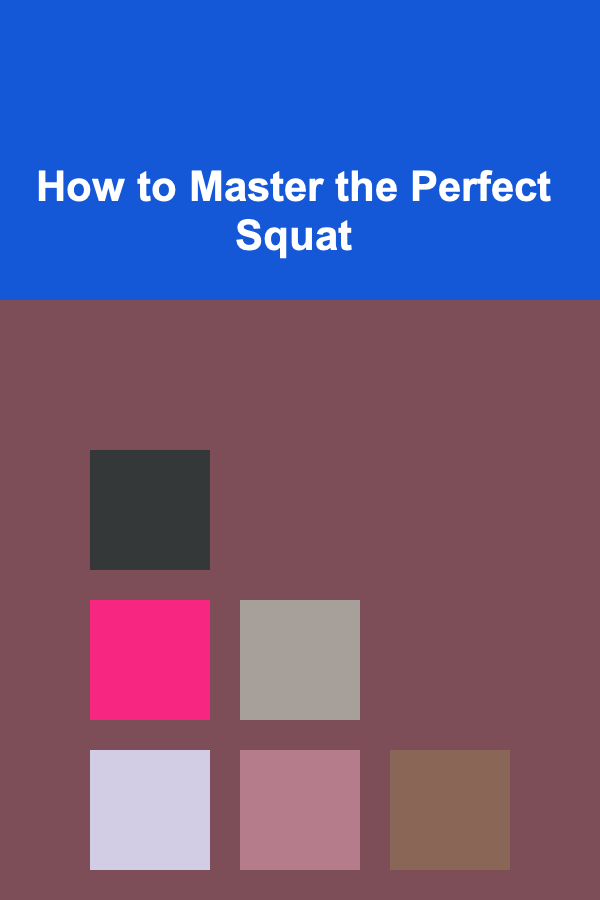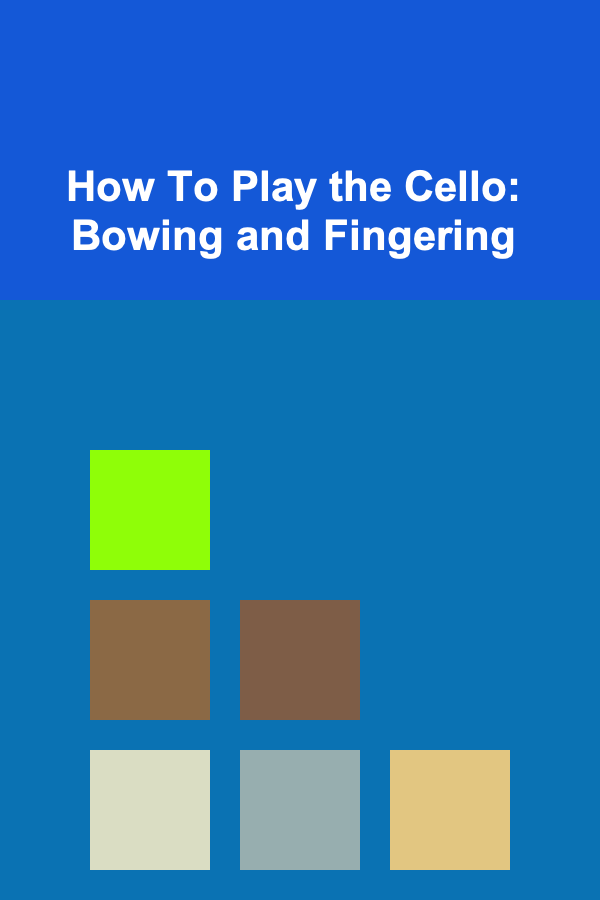
10 Tips for Integrating Props into Your Yoga Routine Checklist
ebook include PDF & Audio bundle (Micro Guide)
$12.99$5.99
Limited Time Offer! Order within the next:
Not available at this time

Yoga is a practice that emphasizes balance, flexibility, strength, and mindfulness. While the fundamentals of yoga can be performed with just your body and a mat, adding props can enhance your practice, support your body, and deepen your experience. Yoga props, such as blocks, straps, bolsters, and blankets, can help you explore new variations of poses, improve your alignment, and increase your range of motion. Whether you're a beginner or an experienced practitioner, incorporating props into your routine can take your practice to new heights.
In this article, we'll explore 10 practical tips for integrating props into your yoga routine. These tips will help you understand when and how to use props to maximize their benefits, promote proper alignment, and bring more mindfulness into your practice.
Start with the Basics: Understand the Different Types of Props
Before integrating props into your practice, it's essential to familiarize yourself with the different types and their benefits. Here's a quick rundown of some common yoga props:
- Yoga Blocks: Blocks are versatile props used to support the body in standing poses, seated stretches, and backbends. They can help you maintain alignment and prevent strain by bringing the floor closer to you.
- Yoga Straps: Straps are excellent tools for deepening stretches, improving flexibility, and extending your reach. They can also be used to help you achieve proper alignment in certain poses.
- Bolsters: Bolsters are large cushions that provide support in restorative poses, helping you relax deeply and relieve tension. They are often used in restorative yoga to help open the chest, stretch the hips, and encourage deep breathing.
- Blankets: Blankets are primarily used for added comfort in seated poses or during relaxation at the end of practice. They can be rolled up for lumbar support or folded for extra padding under the knees.
- Yoga Wheels: The yoga wheel is a newer prop used for backbends and spinal mobility. It helps open the chest and stretch the back, and it can assist in core strengthening.
By understanding the purpose of each prop, you can better determine how and when to integrate them into your practice.
Use Blocks to Improve Alignment and Flexibility
Yoga blocks are one of the most common and beneficial props. They help you maintain proper alignment by adjusting the height of the ground, making it easier to reach the floor or support your body in certain poses.
Tip: Use blocks in standing poses like Triangle Pose (Trikonasana) or Forward Fold (Uttanasana) to bring the floor closer to you if your hands cannot reach the ground comfortably. This can help you maintain proper alignment and avoid strain on your lower back or hamstrings.
Blocks can also assist in seated stretches such as Seated Forward Fold (Paschimottanasana). Placing a block under your hips or knees can help deepen the stretch while keeping your spine long and your hips grounded.
Improve Flexibility with Straps
A yoga strap is a perfect prop for enhancing flexibility, especially in poses where you need to stretch your arms, legs, or torso. Straps can help you reach deeper into stretches and maintain correct alignment by providing a gentle pull to assist in your range of motion.
Tip: In Standing Forward Fold (Uttanasana) or Reclining Hand-to-Big-Toe Pose (Supta Padangusthasana), use a strap around your feet to assist in lengthening the hamstrings without forcing the stretch. Hold the strap with your hands to gently pull your leg closer to you while keeping your spine neutral.
In Bound Angle Pose (Baddha Konasana), a strap can be looped around your feet to help open your hips gradually without straining.
Bolsters for Restorative Poses
Bolsters are invaluable in restorative and yin yoga practices. They provide support in poses that require deep relaxation, allowing you to hold postures for an extended period without feeling discomfort.
Tip: Use a bolster in Child's Pose (Balasana) to support your chest and belly, which can help you feel more grounded and relaxed. This modification allows for deeper breathing and relaxation, especially for those with tight hips or lower back discomfort.
In Reclining Bound Angle Pose (Supta Baddha Konasana), place a bolster underneath your back for additional support and comfort. This encourages a gentle opening of the hips without straining the muscles.
Blankets for Comfort and Support
Blankets are versatile props that can provide cushioning, warmth, and support in various poses. They are especially useful during meditation or Savasana, but they can also be used to support specific areas of your body in other postures.
Tip: In Seated Forward Fold (Paschimottanasana), fold a blanket and place it under your hips to elevate them, which can help you achieve a longer spine and a deeper stretch in the hamstrings. The added lift prevents rounding in the lower back, which allows for a more comfortable stretch.
In Savasana (Corpse Pose), a blanket can be placed over your body for warmth and comfort, especially if you are practicing in a cool environment. This will help you relax and focus on your breath without being distracted by discomfort.
Use Props for Safe Backbends
Backbends are a powerful way to increase flexibility and openness in the spine, but they can be challenging and sometimes intimidating. Props can provide support in these poses, allowing you to experience the benefits of backbends safely.
Tip: Use a bolster or block under your back for support in poses like Camel Pose (Ustrasana) or Wheel Pose (Chakrasana). This will give you a stable base to open your chest and allow your back to arch without straining your lower back.
For Bridge Pose (Setu Bandhasana), place a block under your sacrum to lift your pelvis slightly, creating more space for your spine and allowing for a deeper, more supported stretch.
Incorporate Props into Prone Poses
Prone poses, like Cobra Pose (Bhujangasana) or Locust Pose (Salabhasana), can sometimes cause strain in the lower back, especially for beginners or those with tight muscles. Props can help you build strength and flexibility in these poses without overextending your body.
Tip: Place a bolster or rolled-up blanket under your chest in Cobra Pose (Bhujangasana) to provide support and reduce strain on the lower back. This will allow you to focus on lifting your chest and opening your heart without pushing too hard into your lumbar spine.
In Locust Pose (Salabhasana), use a block under your pelvis to elevate your hips and reduce tension in the lower back. This modification makes it easier to engage the legs and core while lifting the chest and extending the arms.
Enhance Balance with Yoga Wheels
The yoga wheel is a relatively new prop that helps improve spinal mobility, balance, and core strength. It's particularly useful in backbends and balance poses, helping you deepen stretches and improve your body awareness.
Tip: In Wheel Pose (Chakrasana), use a yoga wheel to support your back and deepen the stretch. The wheel provides stability while you work on opening the chest and lengthening the spine. It's especially helpful for beginners or those who struggle to reach the floor with their hands.
For Backbend (Ustrasana) variations, you can also use the wheel as an extension of your spine, offering support while you practice the movement. It can help you improve flexibility in the shoulders and chest.
Use Props to Improve Core Strength
While props are often associated with flexibility and relaxation, they can also help build strength, particularly in your core.
Tip: Use a yoga block between your thighs in poses like Chair Pose (Utkatasana) or Plank Pose (Phalakasana) to activate your inner thighs and engage your core. Squeezing the block gently during these poses will deepen your engagement and improve strength.
In Boat Pose (Navasana), holding a yoga block between your hands can help you maintain balance while strengthening your core muscles.
Be Creative and Experiment with Props
One of the best ways to integrate props into your yoga practice is by experimenting and being creative with their use. Yoga props are designed to assist, not restrict, so don't be afraid to try new combinations or modifications that work best for your body.
Tip: Play around with using multiple props simultaneously. For example, you can use a strap with a block in Downward-Facing Dog (Adho Mukha Svanasana) to help align your body and deepen your stretch.
Props can be used in almost any pose, from standing to seated to restorative. Trust your body and intuition to explore the different ways props can support your practice.
Conclusion
Yoga props are an invaluable tool for enhancing your practice, whether you're aiming to deepen your flexibility, improve alignment, or promote relaxation. By using blocks, straps, bolsters, blankets, and other props, you can modify poses, reduce strain, and experience the full benefits of yoga. As you continue to practice, remember that props are not a crutch, but rather a support system that allows you to explore your body's potential with more awareness and mindfulness.
Incorporating props into your yoga routine is a powerful way to make your practice more accessible, enjoyable, and sustainable. Take your time to experiment, stay present in your practice, and enjoy the process of deepening your connection to your body, breath, and mind.

How to Get Rid of Unwanted Odors in Your Home
Read More
How to Master the Perfect Squat
Read More
How to Transform Your Balcony into Usable Space
Read More
How to Use Storage Bins for Shared Space Organization
Read More
Unlocking Success as a Video Editor: A Comprehensive Guide to Editing Software and Techniques
Read More
How To Play the Cello: Bowing and Fingering
Read MoreOther Products

How to Get Rid of Unwanted Odors in Your Home
Read More
How to Master the Perfect Squat
Read More
How to Transform Your Balcony into Usable Space
Read More
How to Use Storage Bins for Shared Space Organization
Read More
Unlocking Success as a Video Editor: A Comprehensive Guide to Editing Software and Techniques
Read More